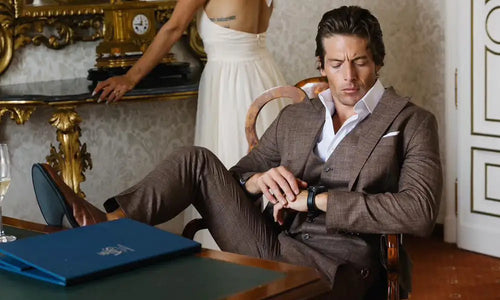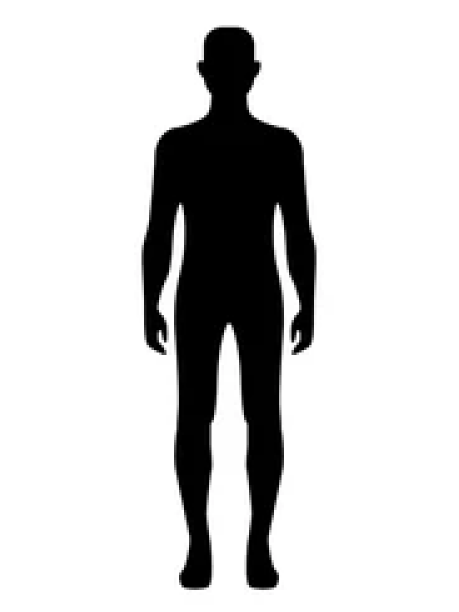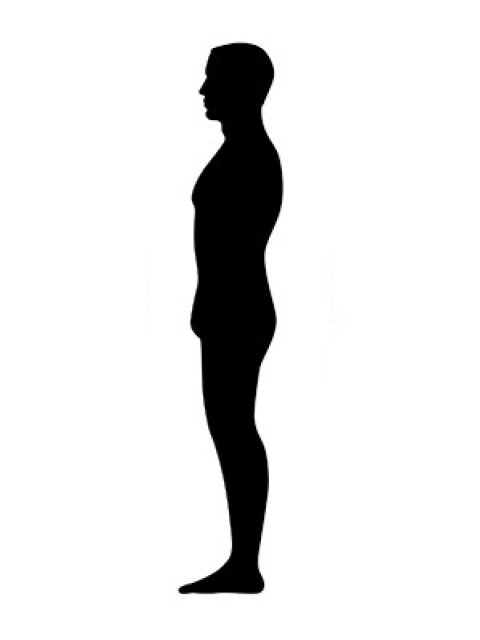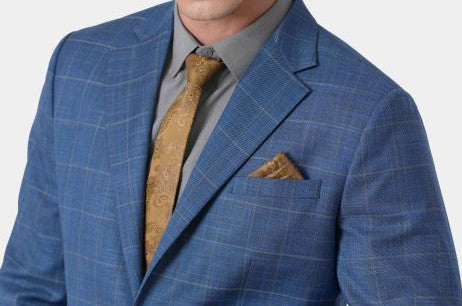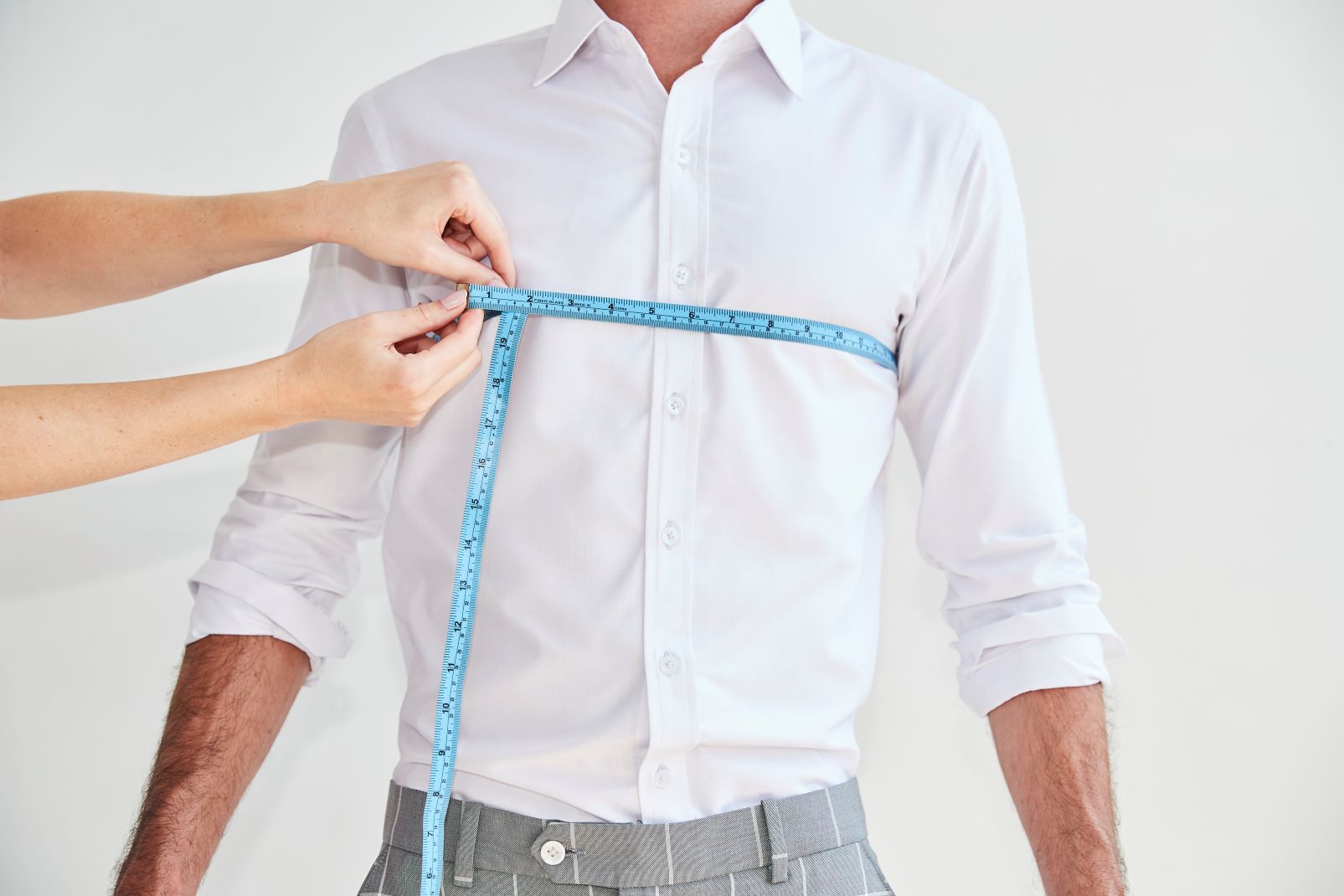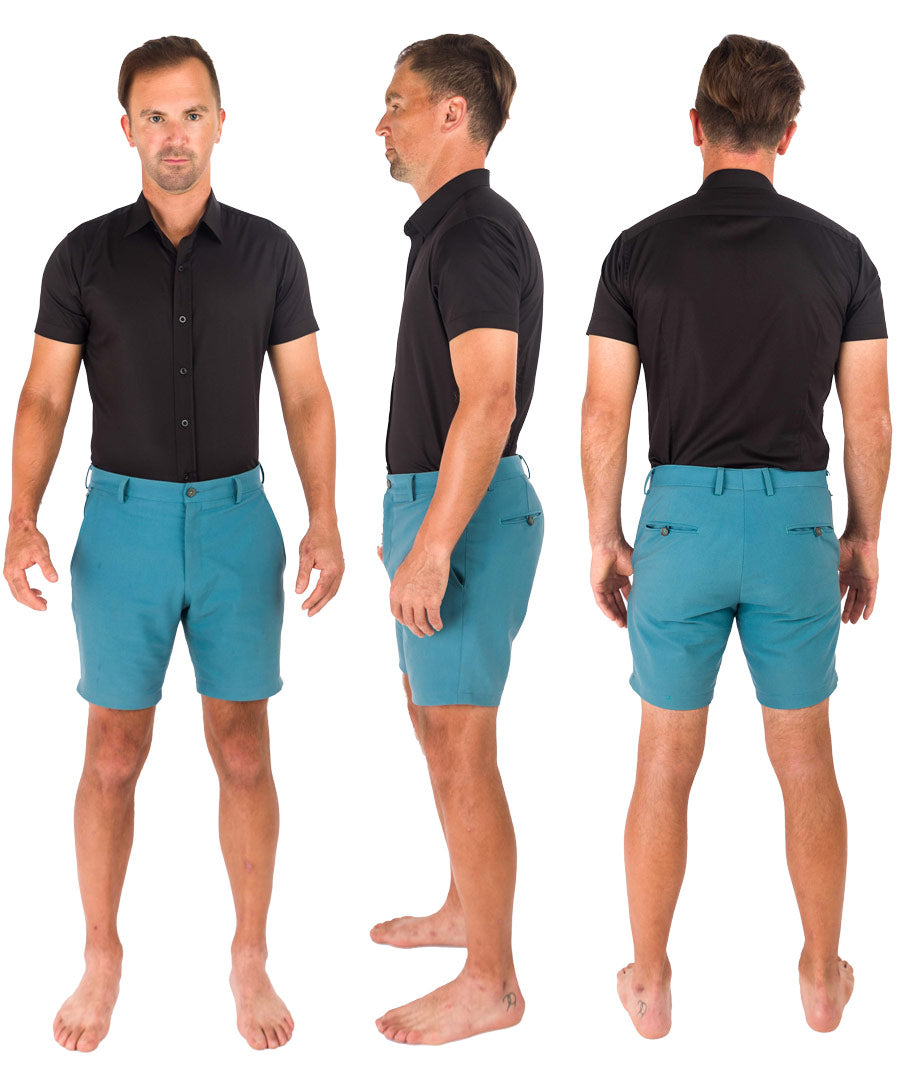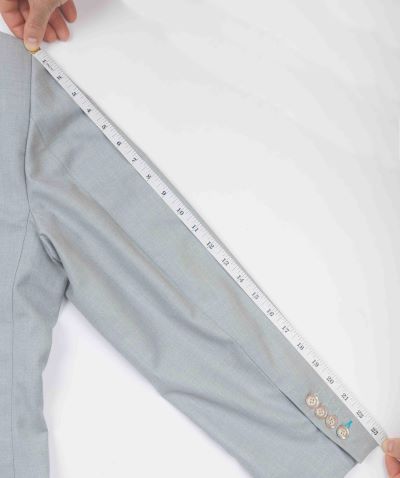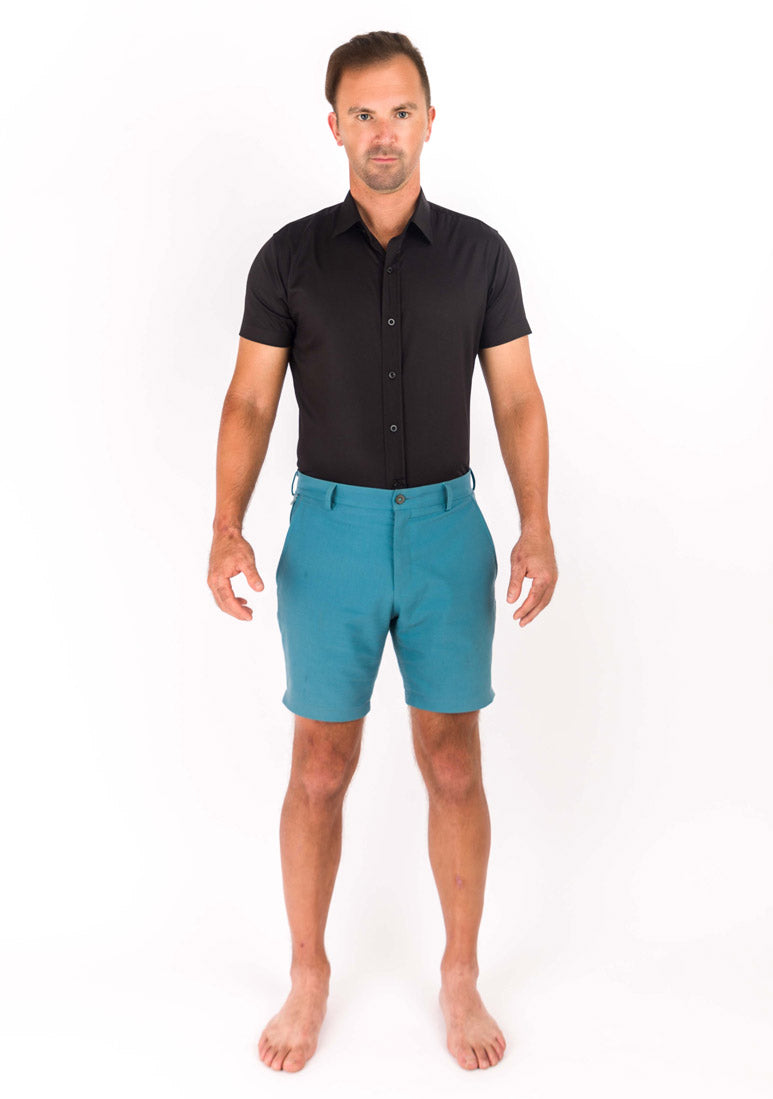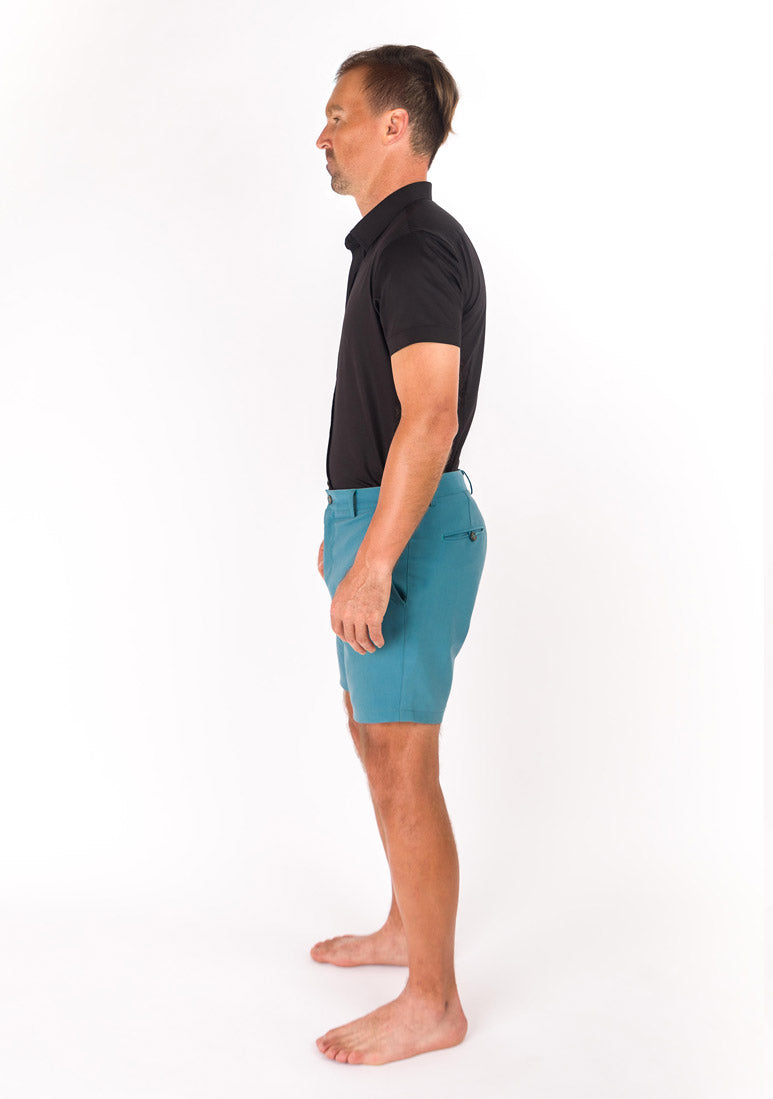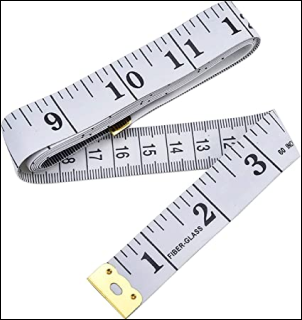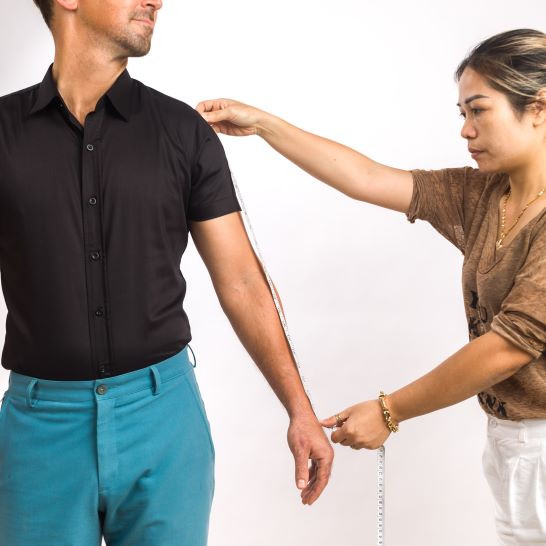Sport Coat Vs Blazer Vs Suit Jacket

Key Takeaways:
- Sport Coat vs. Suit Jacket: Sport coats are for relaxed, textured, standalone style, while suit jackets are formal, smooth, and always part of a matching set.
- Blazer Versatility: The blazer excels as a standalone piece, bridging casual and formal with its distinct buttons and structured yet adaptable fit.
- Fit is King: Regardless of the jacket type, a proper, tailored fit is crucial for looking sharp and maximizing your confidence.
Let’s be honest, men’s jackets can get confusing. You’ve got a wedding next month, a networking event next week, and drinks with friends in between. You want to look put together, but you're not trying to overdo it. So what’s the move: sport coat, blazer, or suit jacket?
While they may look similar hanging on a rack, each has its purpose, vibe, and level of formality. Knowing the difference helps you dress with intention, not just to fit in, but to stand out in a way that feels easy and natural.
This guide breaks down the essentials so you know when to reach for which jacket—and how to make each one work for your lifestyle.
What Is A Sport Coat? Defined And Styled
A sport coat is the most relaxed member of the tailored jacket family. Originally designed for country outings and casual social events, it’s built for movement, texture, and personality. Unlike a men's suit jacket, it’s never part of a set, and unlike a blazer, it’s often bolder in fabric and pattern.
The Defining Features
- No Matching Pants: A sport coat is always a standalone piece.
- Textured Fabrics: Think tweed, flannel, corduroy, cotton, or wool blends, designed to add depth and visual interest.
- Relaxed Structure: You’ll typically see softer shoulders, less padding, and more room in the body for layering.
- Functional Details: Patch pockets, elbow patches, and casual buttons (like horn or wood) are common.
Blazer Vs Suit Jacket: How To Tell Them Apart
Step into the world of men’s tailoring, and you’ll encounter two iconic pieces: the blazer and the suit jacket. While they may look similar at first glance, the nuanced details set them apart, empowering you to choose to elevate your look and reflect your individuality.
Fabric And Construction
Blazers are traditionally crafted from hardy, often textured fabrics like flannel, hopsack, or serge, designed to be worn as standalone pieces. On the other hand, suit jackets are made as part of a matched set, using finer, smoother materials such as worsted wool. This continuity in fabric between jacket and trousers is the hallmark of the suit jacket, epitomizing luxury and formal consistency.
Design And Detailing
Blazers typically feature bolder, more expressive details, think metal or contrasting buttons, patch pockets, and occasional accent stitching. These design choices inject personality and a sense of flair, encouraging you to express your style confidently. Suit jackets maintain a more uniform aesthetic, with matched buttons and subtler finishing, prioritizing understated elegance and formality.
Versatility And Purpose
A blazer is the ultimate chameleon, seamlessly shifting from business-casual gatherings to elevated weekend outings. It empowers you to break away from convention, pairing effortlessly with everything from tailored chinos to dark denim. The suit jacket, in contrast, is designed for occasions where polish is paramount: business meetings, weddings, or any event where traditional sophistication reigns.
Key Differences: Fabric, Fit, And Structure
When seeking the perfect jacket for every occasion, understanding the fundamental nuances of each style is essential. The distinction between a sport coat, blazer, and suit jacket lies in more than just formality; it’s about how each piece aligns with your aspirations, flatter your individuality, and serve your lifestyle.
Fabric
Fabric selection sets the tone for each jacket type. Sport coats typically feature textured or patterned fabrics, think tweed, corduroy, or houndstooth, offering versatility and a touch of informality. Blazers, often unpatterned but occasionally adorned with subtle details, tend to use smooth worsted wool, hopsack, or cashmere, balancing sophistication with all-day comfort. Suit jackets are almost always cut from fine, matching suiting wool, emphasizing sleekness and polish destined for seamless integration with matching trousers.
Fit
Fit is the ultimate expression of a jacket’s purpose. Sport coats embrace comfort with slightly relaxed silhouettes, accommodating layering and movement for active days or casual gatherings.
Blazers are intentionally tailored and structured enough to stand alone as statement pieces but still flexible, empowering the wearer to look composed without sacrificing ease. Suit jackets, however, are precision-fitted: designed to create crisp, uninterrupted lines from shoulder to hem, asserting confidence and elegance for formal occasions.
Structure
Structure elevates each piece in distinct ways. A sport coat often features minimal padding and softer shoulders, delivering effortless style that moves with you. Blazers incorporate moderate internal construction, defining the torso without suppressing individuality, which is ideal for boardrooms or upscale events.
Suit jackets, by contrast, boast sharper shoulders, a structured chest, and precise shaping. They are crafted to complement matching trousers and present a unified look that underscores achievement and luxury.
Styling Smart: When To Wear A Sport Coat, Blazer, Or Suit Jacket
Each jacket, sport coat, blazer, and suit jacket commands its own space in the sartorial spectrum. Knowing when to wear each amplifies your confidence and ensures you’re dressed impeccably for any occasion. Here’s how you can draw on the strengths of each piece, embracing individuality and sophistication.
When To Wear A Sport Coat
Reach for a sport coat when the setting calls for relaxed polish, think business-casual offices, creative industry gatherings, or upscale weekend brunches. Its distinct patterns and array of fabrics, ranging from tweeds to lightweight linens, make it the ideal canvas for personal expression. Pair it with chinos or dark denim for an effortlessly elevated look, but comfortable enough to move through your day easily.
When To Wear A Blazer
The classic blazer bridges the gap between the relaxed sport coat and the structured suit jacket. Traditionally navy and adorned with metal buttons, the modern blazer now comes in a broad palette of colors and finishes.
Wear a blazer when you aim to strike the right note at networking events, client meetings, or dinners where the mood is upscale yet not strictly formal. When paired with contrasting trousers, it brings a sense of unity, allowing personal flair while still suggesting intention and refinement. With a blazer, you radiate confidence, asserting style without appearing overdressed.
When To Wear A Suit Jacket
A suit jacket is unmatched when formality and precision matter most. Reserved for occasions where harmonious, streamlined presentation is key, weddings, important interviews, and black-tie affairs, it demands to be worn as part of a matched ensemble with trousers of the same fabric and color. A classic black suit jacket, in particular, evokes authority and timeless elegance.
The suit jacket’s tailored lines and fine construction project timeless elegance and command respect, making it an armor of success in the most significant moments. Choose a suit jacket when you want your presence to feel deliberate, cohesive, and unmistakably sophisticated.
How To Style Each Jacket: Smart, Casual, Formal
Understanding how to style a sport coat, blazer, and suit jacket for various occasions empowers you to curate looks that express confidence, sophistication, and individuality. Here’s how each piece can seamlessly adapt to smart, casual, and formal settings, ensuring your wardrobe rises to every occasion.
Sport Coat: Rugged Versatility
- Casual: Embrace the sport coat’s heritage by pairing it with denim or chinos and an open-collar knit polo or a crisp T-shirt. Textured fabrics like tweed or herringbone add depth and a touch of adventurous spirit. Finish with leather sneakers or loafers for an effortlessly polished day-to-day look.
- Smart: Elevate the ensemble with tailored trousers, a fine-gauge sweater, and brogues. Opt for subtle patterns or earthy hues to retain approachability while signaling refined taste. A pocket square introduces personality and a dash of luxe without overstepping the relaxed boundary.
- Formal: While sport coats are less conventional for formal settings, select a deep, solid color and pair it with pressed dress pants, a collared shirt, silk tie, and classic oxfords. This approach strikes a bold statement, perfect for creative workplaces or evening events that lean modern rather than traditional.
Blazer: Timeless Elegance
- Casual: The single- or double-breasted blazer, especially in lighter colors or unstructured builds, becomes surprisingly versatile when styled with dark jeans or lightweight chinos. Try a Breton stripe tee or simple button-down to balance sophistication with weekend-ready charm.
- Smart: A navy or grey blazer over sharp slacks, layered with a patterned shirt and minimal accessories, signals intent and attention to detail. Loafers or derbies cement the smart vibe, while mixing patterns (like a subtle check or windowpane) offers a modern edge.
- Formal: Double down on tradition by pairing your blazer with tailored wool trousers, a crisp white shirt, silk tie or bow tie, and leather dress shoes. Silver cufflinks and a pocket square in a bold hue ensure presence and poise—ideal for weddings or elevated gatherings.
Suit Jacket: Impeccable Precision
- Casual: Detach the suit jacket from its matching trousers for a laid-back vibe. Combine with slim-fit chinos, a tucked-in crew neck, and minimalist sneakers. Avoid heavily structured or glossy fabrics for true versatility outside formal constraints.
- Smart: The suit jacket, integrated with contrasting dress pants and a roll-neck sweater, offers a masterclass in modern business casual. Monotone or neutral palettes deliver clean lines and a professional air, perfect for creative meetings and networking events. A blue suit jacket in a soft wool or unstructured build can be especially effective in balancing approachability and polish.
- Formal: Classic pairing with matching suit trousers, dress shirt, silk tie, and polished dress shoes delivers unequivocal elegance. Pocket squares and subtle lapel pins add distinction. Opt for a three-piece configuration or rich textures like mohair or superfine wool for extra luxury.
With the right approach, every jacket becomes a canvas for personal expression: resilient for the adventurous, timeless for the discerning, and precise for those who seek undeniable impact.
Common Mistakes Men Make With Jackets
Understanding the difference between a sport coat, a blazer, and a suit jacket is only half the battle. Even the best sartorial intentions can be undermined by common missteps. Let’s break down a few pitfalls to avoid when elevating your jacket game:
Mixing The Wrong Pieces
Pairing a suit jacket with casual trousers or jeans may seem innovative, but these jackets are designed with matching pants in mind. The subtle weave, texture, and structure of a suit jacket make it look out of place when worn as a separate. Instead, opt for a sport coat or blazer, which are intentionally designed for maximum versatility and can be mixed effortlessly.
Overlooking Fit And Proportion
A jacket that’s too long, short, tight, or loose doesn’t just compromise your look—it can dampen your confidence. Many men grab standard sizes off the rack, only to end up with sleeves that swallow their hands or shoulders that sag. Precision tailoring is the secret weapon here; a well-fitted jacket accentuates your frame, allowing your personal style to shine.
Ignoring Fabric And Seasonality
Wearing a heavy tweed blazer in the peak of summer or a thin linen sport coat deep into winter will leave you uncomfortable and look out of place. Understanding which fabrics complement the season—not just the occasion—ensures you are comfortable and stylish year-round.
Over-Accessorizing (Or Under-Accessorizing)
A bold pocket square, lapel pin, or stylish watch can take your look to new heights, but piling on too many accessories can muddle the outfit’s clarity. Conversely, skipping accessories altogether can make even the finest jacket appear forgettable. The key is balance, choose one or two details that complement rather than compete.
Neglecting Jacket Maintenance
Maintaining your jacket matters as much as choosing it. Creases, loose threads, unkempt lapels, or missing buttons will undermine even the most luxurious item. Regular brushing, spot cleaning, and mindful storage help preserve shape and sharpness, giving your jacket longevity and keeping you looking empowered, polished, and ready for any occasion.
Final Thoughts
Understanding the difference between a sports coat, blazer, and suit jacket is more than just a matter of style; it’s about dressing with purpose. Each jacket carries its own story, crafted for distinct settings, moods, and expressions of individuality. By learning the nuances of fabric, fit, and function, you empower yourself to step into any room with clarity and confidence.
Whether you're dressing for a laid-back brunch, a crucial business meeting, or a formal event, knowing which jacket to reach for ensures you're always appropriately and impressively attired. Style isn't just about what you wear, but how intentionally you wear it. With this guide, you're well on your way to mastering modern menswear with authenticity and ease.
Read also:
- Suit Jacket Or Blazer: The Difference
- Perfect Suit Jacket Fit Guide
- Understanding Different Suit Jacket Styles
Frequently Asked Questions About Sport Coat Vs Blazer Vs Suit Jacket
What characterizes a suit jacket?
A suit jacket is defined by its matching trousers, creating a cohesive and elegant ensemble. Crafted from finer, smooth fabrics and often featuring structured shoulders, a suit jacket is designed for formal occasions where sophistication and a seamless look matter most.
Can a blazer be worn as part of a suit?
A blazer is designed as a versatile, standalone piece, not traditionally paired with matching trousers. While both blazers and suit jackets elevate your look, blazers often feature bold buttons and distinct colors, making them perfect for expressing individuality.
Is a blazer formal or casual?
A blazer is a master of versatility, confidently bridging the gap between formal and casual. It delivers an instantly polished look with everything from dress pants to jeans.
What is the difference in fit between a sport coat, blazer, and suit jacket?
Suit jackets typically feature a more structured, close-to-the-body fit to maintain that polished, unified aesthetic. Blazers allow for a touch more freedom, with a tailored but slightly relaxed cut for style versatility. Sport coats are designed for comfort and movement, fitting more loosely to accommodate layering.
How do you match a blazer with trousers?
Pairing a blazer with trousers is about balance and expression. Avoid matching the fabrics or colors exactly (that’s a suit jacket’s territory). Instead, experiment with complementary tones and textures, think navy blazers with grey wool trousers, or patterned blazers with solid chinos.
Is it acceptable to wear a suit jacket as a blazer?
While it’s possible, style aficionados know that suit jackets are cut and constructed for the full suit experience; their formal styling, fabrics, and structure can appear mismatched when separated.
